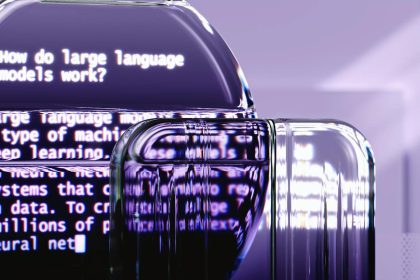The world of cryptocurrency, particularly Bitcoin, is a fascinating landscape often characterized by its dramatic price swings and significant energy demands. For years, observers and analysts have debated the precise nature of the relationship between how much energy Bitcoin consumes and how its price behaves. Are these two phenomena merely correlated, or is there a more profound cause-and-effect dynamic at play? This article delves into this intricate question, exploring advanced analytical approaches that shed light on their intertwined fate.
Understanding the Core Dynamics
Bitcoin’s energy consumption is primarily driven by the proof-of-work (PoW) consensus mechanism. Miners expend considerable computational power to validate transactions and secure the network, which in turn requires substantial electricity. This energy expenditure directly correlates with the network’s hash rate – the total combined computational power being used to process transactions on the blockchain.
Conversely, Bitcoin’s price volatility is a hallmark of its relatively nascent and speculative market. Factors influencing price include investor sentiment, regulatory news, adoption rates, and macroeconomic trends. However, the question remains: does the sheer scale of energy required to maintain the network exert a tangible influence on its market value, and vice-versa?
Investigating Causality: Beyond Simple Correlation
Establishing causality in complex financial systems is notoriously challenging. Many studies have pointed to correlations between Bitcoin’s hash rate (a proxy for energy use) and its price. However, correlation does not equal causation. To truly understand the relationship, we need to employ more sophisticated analytical tools that can assess the directional influence between these variables.
The Role of Advanced Modeling Techniques
Recent research has turned to cutting-edge statistical and machine learning methods to untangle these complex relationships. These techniques move beyond traditional linear models to capture the nuanced, often non-linear, interactions that characterize Bitcoin’s ecosystem.
- Non-linear Granger Causality Tests: These statistical tests are designed to determine if one time series is useful in forecasting another, even when considering non-linear relationships. They allow researchers to probe whether changes in energy consumption precede changes in price, or if price movements influence the network’s energy expenditure.
- Artificial Neural Networks (ANNs): ANNs, with their ability to learn intricate patterns from vast datasets, are proving invaluable. They can model complex, non-linear dependencies between variables that simpler models might miss. By feeding historical data on energy use and price into these networks, analysts can explore potential predictive relationships.
How Energy Use Might Influence Price
Several hypotheses suggest how Bitcoin’s energy consumption could impact its price:
- Cost of Production: The energy cost is a significant component of Bitcoin mining. If energy prices rise, the cost to mine new Bitcoin increases. This could theoretically lead miners to sell their holdings at a higher price to maintain profitability, thus influencing market prices.
- Network Security and Confidence: A robust and energy-intensive network is often seen as more secure. High energy consumption can signal a healthy, active network, potentially boosting investor confidence and, by extension, demand and price.
- Environmental Concerns and Regulatory Scrutiny: Conversely, high energy use can attract negative attention due to environmental concerns. This could lead to increased regulatory pressure or a negative shift in public perception, potentially dampening demand and price.
How Price Might Influence Energy Use
The relationship is likely bidirectional. Bitcoin’s price can also influence its energy consumption:
- Miner Profitability: When Bitcoin’s price is high, mining becomes more profitable. This incentivizes more miners to join the network or to upgrade their hardware, leading to an increase in the overall hash rate and, consequently, energy consumption.
- Technological Innovation: A higher Bitcoin price can fuel investment in more efficient mining hardware and renewable energy solutions for mining operations. While this might not immediately reduce overall energy use, it can change the *source* of that energy over time.
Challenges and Future Directions
Accurately quantifying these relationships is an ongoing challenge. Data availability, the dynamic nature of the crypto market, and the influence of external factors (like global energy markets and geopolitical events) all contribute to the complexity. Furthermore, the shift towards more energy-efficient consensus mechanisms in other cryptocurrencies, and potential future upgrades to Bitcoin itself, could alter these dynamics.
Researchers are continuously refining these analytical models. The integration of advanced machine learning algorithms, coupled with granular data on energy sources and mining operations, promises to offer deeper insights into the cause-and-effect pathways between Bitcoin’s energy footprint and its market value. Understanding this intricate interplay is crucial for investors, policymakers, and anyone seeking to grasp the future trajectory of this revolutionary technology.
For further exploration into the technical underpinnings of such analyses, you might find resources on TensorFlow helpful, as it provides powerful tools for building and deploying machine learning models, including those used in time-series analysis.
Additionally, understanding the economic principles behind market dynamics can provide valuable context. Resources from institutions like the International Monetary Fund (IMF) offer broad economic perspectives that can inform the interpretation of cryptocurrency market behavior.





